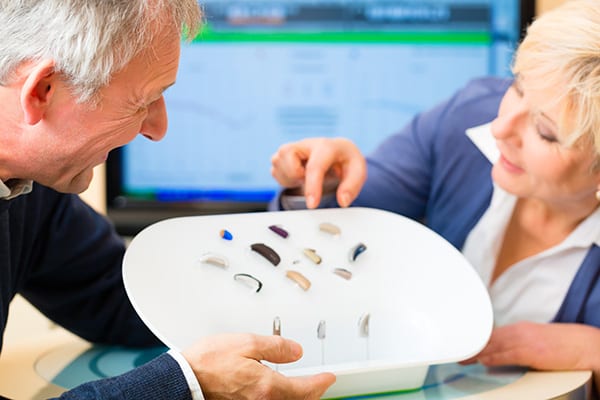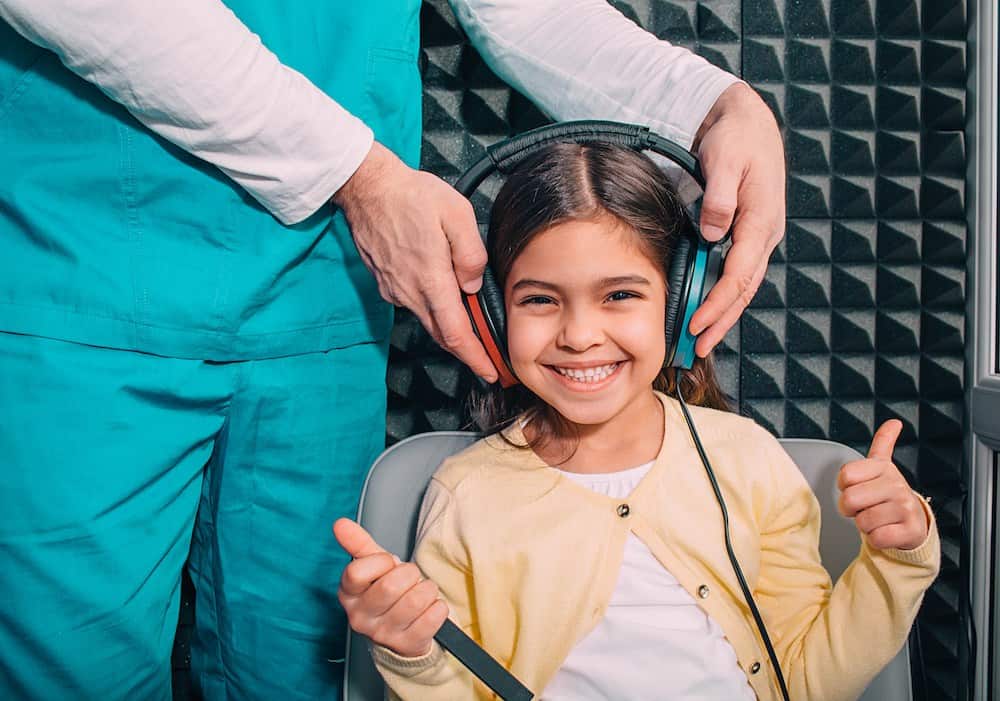How to Adjust Hearing Aids for Seasonal Allergies
Allergy season brings familiar symptoms like sneezing, watery eyes and

A hearing aid is a small electronic device that improves hearing. Hearing aids come in different styles and finding the perfect one will depend on your degree of hearing loss, your lifestyle preferences and the cosmetic concerns you may have. With several styles or options available, knowing which style to go in for can seem quite daunting. Fortunately, an audiologist will recommend which style will work best for you. This article will give you a short overview of the top five hearing aid styles currently available, what makes each one different from the other and the level of hearing loss each style is best for.
ITE hearing aids are one of the most common of the custom-fit hearing aid styles. They are most effective against mild and severe hearing loss. Each ITE design is custom-made to suit the mold of your ear and comes with all the components fitting in a plastic casing. The design allows the hearing aid to fit smoothly on the outer portion of your ear and comes with some manual controls to suit different hearing environments.
Some ITE hearing aids may come with extra features installed, like a telecoil. The telecoil is a tiny magnetic coil that makes it possible for the user to experience sound with the help of the circuitry in the hearing aid instead of through its microphone. That makes it easier to hear telephone conversations.
BTE hearing aid styles are ideal for moderate to severe hearing loss. They comprise a hard plastic casing worn behind the ear connected to plastic earmolds that fit comfortably in the outer ear. A case behind the ear holds all the electronic parts. However, a new type of BTE design is an open fit type. It is smaller and fits at the back of the ear completely, leaving only a narrow tube placed in the ear and allowing the ear canal to remain open.
Because of this design, BTE hearing aid styles can be an excellent choice for people who experience earwax buildup, as such substances are less likely to destroy the hearing aid. Additionally, some people may also opt for the open-fit design because the perception of their voice does not seem plugged up.
CIC hearing aids are designed to fit comfortably into the ear canal. With this style, only the tip of its small plastic handle is visible outside the canal, making it less difficult to remove or insert the device. CIC hearing aids work very well on users experiencing mild to moderate hearing loss. Their design makes them very small in size, but unfortunately, this can also pose some dexterity challenges. Also, they have less space for batteries or even to accommodate extra features like a telecoil because of their small size. Their small sizes also limit their volume and power levels. Because they give the user fewer functionality options, they are usually not recommended for kids or people experiencing profound hearing loss.
The CIC hearing aid style is sometimes considered a variant of the ITC hearing aids and is also custom-made to fit perfectly to the mold of your ear. Its design also makes it slightly smaller than an ITE hearing aid style, leaving only a tiny portion of the hearing aid shell visible in the outer ear region. ITC designs, in general, are perfect for people experiencing mild to mildly severe hearing loss. They are available in various faceplate covers and can also feature manual controls for memory and volume adjustments, despite their small sizes.
Again, size may be an issue for people with dexterity issues.
The receiver-in-canal hearing aid style is suitable for people experiencing mild to moderate hearing loss. With this design of a hearing aid, the receiver is placed inside the ear canal. A thin electrical wire connects the receiver to the primary device, giving the RIC a much smaller size than other styles like the BTE. RICs are also very sleek in design and usually come packed with all the features needed to handle mild to moderate hearing loss.
The design makes this style small, discreet and quick to fit, making it perfect for people trying on hearing aids for the first time. Most RICs can fit open, allowing for more natural sound quality of the user’s voice. You may also have bigger sizes that make room for more functions.
Contact 727-289-1212 to get more information about hearing aid styles and learn more about Hear Here Audiology.

Allergy season brings familiar symptoms like sneezing, watery eyes and

Cold and flu season brings extra challenges when you wear hearing aids.

Imagine you’re living in a rural area, miles from the nearest